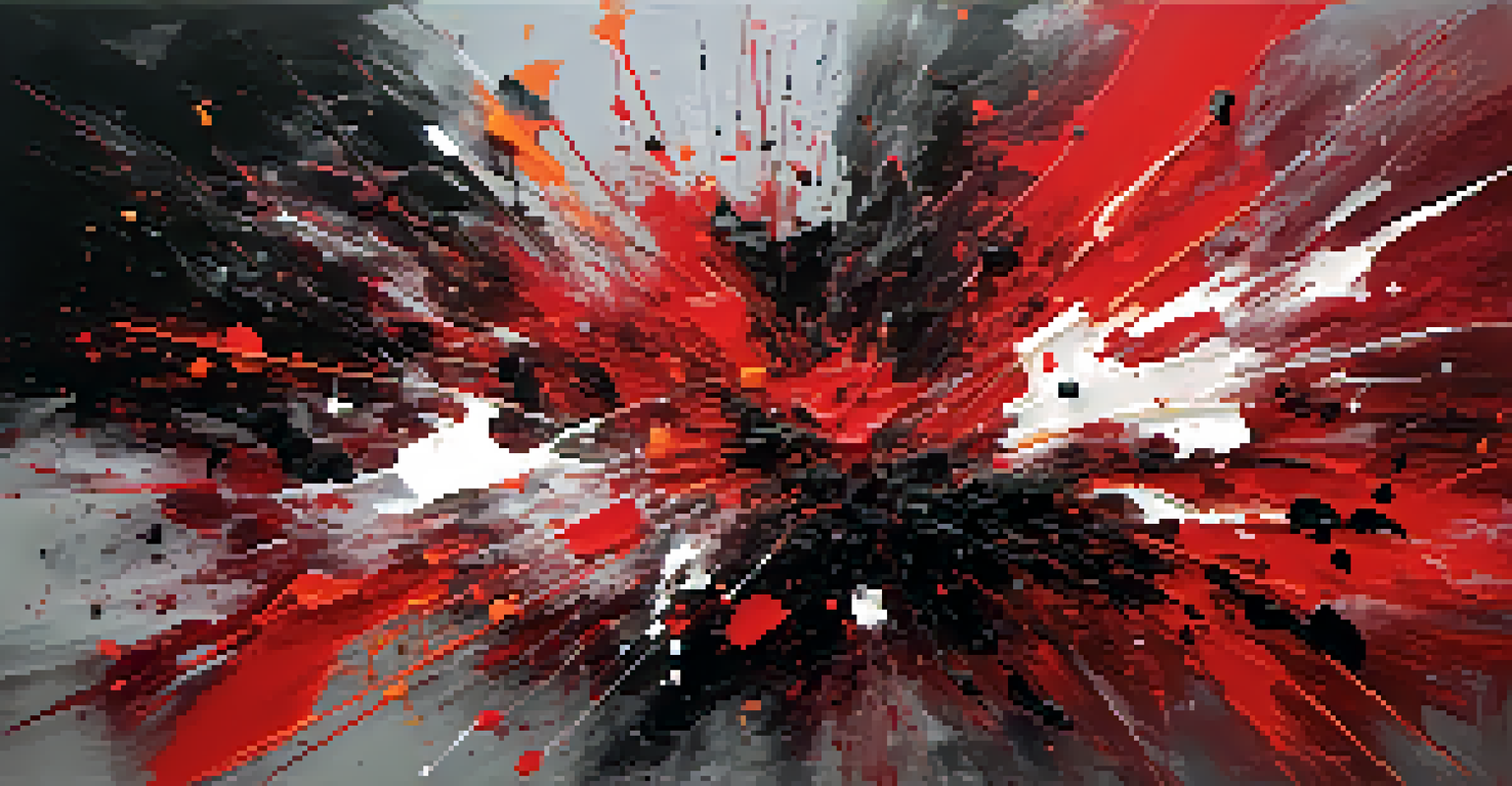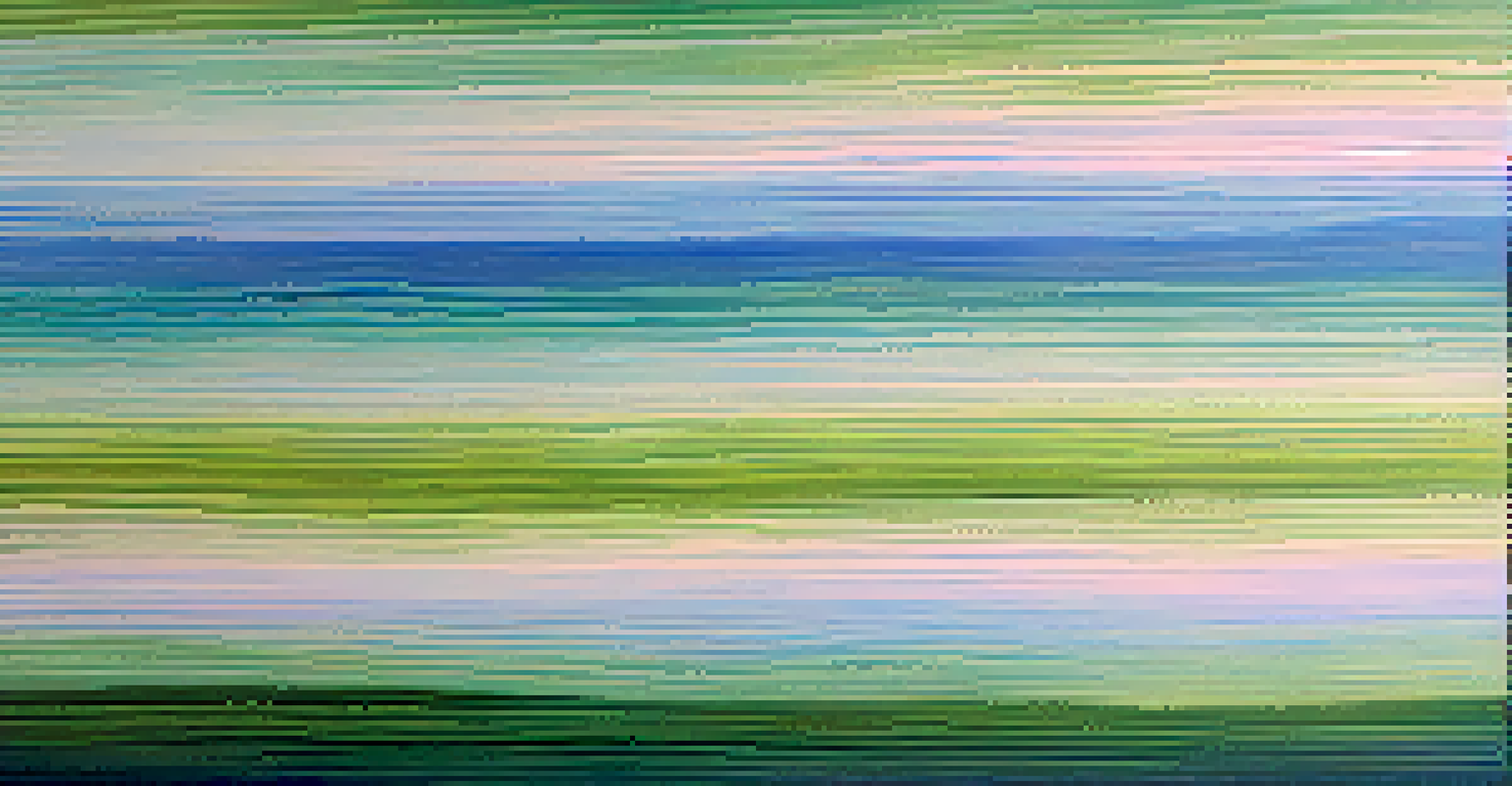From Calm to Chaos: Brush Techniques That Convey Emotion

Understanding the Role of Emotion in Art
Art is often a reflection of human emotions, and understanding this connection is crucial for artists. Emotions can range from serene calmness to intense chaos, each evoking a different response in the viewer. By recognizing the emotional weight behind their work, artists can create pieces that resonate deeply with their audience.
Art enables us to find ourselves and lose ourselves at the same time.
For instance, a painting that captures a tranquil landscape might use soft, blended colors to evoke feelings of peace and relaxation. On the other hand, a chaotic abstract piece might employ bold, jagged strokes and contrasting colors to convey tension and unrest. This duality in emotional expression is what makes art so compelling.
Ultimately, mastering the conveyance of emotion through art requires both practice and a keen awareness of the techniques available. By exploring various brush techniques, artists can learn to manipulate their medium to communicate feelings effectively.
The Power of Brush Strokes in Art
Brush strokes are more than just a means to apply paint; they are a powerful tool for expressing emotion. The way a brush interacts with the canvas can drastically change the mood of a piece. For example, quick, erratic strokes can create a sense of urgency, while smooth, flowing strokes often suggest calmness.

Consider the difference between a painting created with a dry brush technique versus one using a wet-on-wet approach. The former might convey a sense of restraint or stillness, while the latter can lead to vibrant blends, suggesting movement and chaos. These choices are significant in shaping the emotional landscape of the artwork.
Emotion Shapes Artistic Expression
Artists can evoke a wide range of emotions through their work by understanding and manipulating the emotional weight of their chosen techniques.
By experimenting with different brush techniques, artists can discover how subtle variations impact the overall feeling of their pieces. This exploration can lead to a deeper understanding of how to convey specific emotions through art.
Calm Techniques: Creating Serenity with Brushes
To evoke calmness in art, artists often turn to techniques that promote softness and fluidity. One effective method is using a wet-on-dry technique, where wet paint is applied to a dry canvas, allowing for precise control and gentle transitions. This can create a serene atmosphere, perfect for landscapes or tranquil scenes.
The only time I feel alive is when I'm painting.
Another technique is the use of soft, circular brush strokes. These strokes can mimic the gentle ebb and flow of nature, such as waves on a shore or clouds in the sky. By using lighter pressure and softer brushes, artists can achieve an ethereal quality that draws viewers into a peaceful state.
Incorporating color palettes that consist of pastels or muted tones can further enhance the feeling of calm. When combined with these brush techniques, the result is a harmonious piece that resonates with tranquility.
Chaos Techniques: Evoking Turmoil and Emotion
Contrasting with the serene techniques, creating a sense of chaos involves bolder brushwork and color choices. Techniques such as splattering, aggressive strokes, and layering can evoke feelings of disarray and intensity. These methods can be particularly effective in abstract art, where emotion takes precedence over form.
For instance, a painter might use frenetic brush strokes to mimic the chaos of a bustling city or a stormy sea. The erratic application of paint can elicit a visceral reaction from the viewer, drawing them into the turmoil of the scene. This approach taps into the emotional undercurrents that often accompany chaos.
Techniques Create Emotional Depth
Different brush techniques, whether calm or chaotic, can significantly influence the emotional atmosphere of an artwork.
Additionally, darker color palettes punctuated with bright accents can create a striking visual impact. This contrast not only captures attention but also amplifies the emotional response, making the chaotic elements feel more pronounced.
Layering Techniques for Emotional Depth
Layering is a powerful technique that can add depth and complexity to any artwork, whether calm or chaotic. By building up layers of paint, artists can create a sense of history and emotion within the canvas. Each layer tells a story, contributing to the overall feeling of the piece.
In calm artworks, layering might involve soft washes of color that blend seamlessly, creating a gentle gradient that invites reflection. This subtlety encourages viewers to explore the nuances of the piece, experiencing a meditative quality.
Conversely, in chaotic pieces, layering can introduce tension and complexity. Artists might apply thick, textured strokes over chaotic backgrounds to create conflict within the artwork. This contrast not only captures the viewer's eye but also evokes a sense of struggle, drawing them into the emotional turmoil of the piece.
The Impact of Color Choices on Emotional Expression
Color is a defining factor in how emotions are perceived in art, making it essential for artists to understand its psychological effects. Calming colors like blues and greens often evoke feelings of tranquility, while reds and blacks can invoke anger or chaos. This relationship between color and emotion can guide artists in their creative process.
For instance, an artist aiming to convey serenity might choose a palette dominated by soft blues and greens, using gentle brush strokes to enhance the feeling of calm. In contrast, a chaotic piece could utilize sharp reds and blacks, applied with vigorous strokes to evoke feelings of unrest.
Color Choices Impact Feelings
The psychological effects of color play a crucial role in how emotions are conveyed in art, guiding artists in their creative process.
Experimenting with color combinations alongside brush techniques allows artists to refine their emotional messaging. By understanding the emotional weight of their color choices, they can create more impactful and resonant artworks.
Combining Techniques for Greater Emotional Impact
The most compelling artworks often combine various techniques to convey complex emotions. By blending calm and chaotic brush techniques, artists can create a dynamic tension that captivates viewers. This interplay between serenity and turmoil can reflect the multifaceted nature of human emotions.
For example, an artist might use calm, flowing strokes in the background while incorporating chaotic splatters and jagged edges in the foreground. This contrast not only draws the eye but also evokes a deeper emotional response, inviting viewers to explore the duality of the scene.

Ultimately, the synergy of different techniques allows artists to push the boundaries of emotional expression. By embracing both calm and chaotic elements, they can create works that resonate on multiple levels, inviting contemplation and dialogue.
Finding Your Unique Emotional Voice in Art
As artists explore various brush techniques and emotional expressions, they begin to discover their unique voice. This journey involves experimenting with different styles and methods, allowing personal experiences and emotions to influence their work. Over time, this exploration leads to a distinctive artistic identity.
It's important for artists to take risks and embrace vulnerability in their creations. By channeling their emotions into their art, they can create authentically and connect with viewers on a deeper level. This authenticity often resonates more than technical perfection.
In the end, the goal is to create art that speaks to both the artist and the audience. By mastering brush techniques that convey emotion, artists can share their stories and experiences, making a lasting impact in the world of art.